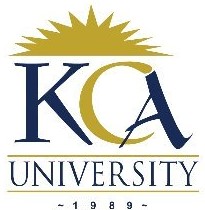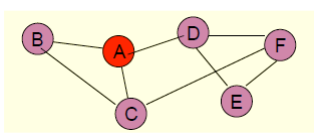 UNIVERSITY EXAMINATIONS: 2018/2019
UNIVERSITY EXAMINATIONS: 2018/2019
EXAMINATION FOR THE DEGREE OF BACHELOR OF SCIENCE IN
INFORMATION TECHNOLOGY /BACHELOR OF BUSINESS IN
INFORMATION TECHNOLOGY / BACHELOR OF APPLIED COMPUTING
BIT2103 & BBIT200 PRINCIPLES OF ARTIFICIAL INTELLIGENCE
FULL TIME/PART TIME/DISTANCE LEARNING
DATE: APRIL, 2019 TIME: 2 HOURS
INSTRUCTIONS: Answer Question One & ANY OTHER TWO questions.
QUESTION ONE
(a) . Define the term “Intelligence” [2 Marks]
(b) Describe any three types of human intelligence. Explain which tools for improving each
type of intelligence and potential careers [9 Marks]
(c) State and explain three branches of artificial intelligence [6 Marks]
(d) Briefly explain the meaning of the following artificial intelligence terms and give one example for
each case
(i) Knowledge representation [2 Marks]
(ii) Forward chain inferencing [2 Marks]
(iii) Heuristics [2 Marks]
(iv) Backward chain reasoning [2 Marks]
(e) Answer the following questions by indicating whether the statements are True (T) or False (F).
[4 Marks]
1. informed searching algorithms are efficient
2. Depth-first search is an example of un informed searching method.
3. Breadth first algorithm is optimal.
4. Greedy search algorithm is complete
QUESTION TWO
(a) Describe five characteristics of a good knowledge representation technique [5 Marks]
(b) Translate the following statements into predicate logic [3 Marks]
i. Everything in the garden is lovely
ii. John likes chocolate
iii. Every book has an author
(c) Give that P is true, Q is false and R true, use truth table to determine the truth value of the following
Expression [2 Marks]
![]()
(d) Consider the following knowledge that describes properties of specific animals
cats, bears and whales are mammals. Bears and cats have fur while whales and fish lives in water. Both
mammals and fish are animal.
(i) Draw a semantic network to represent the above knowledge [3 Marks]
(ii) Convert the semantic network drawn in (i) into a hierarchy of frames [3 Marks]
(iii) Use the above scenario to write a collection of facts and rules using predicate logic that can be stored
in a knowledgebase. [2 Marks]
(iv) Write a query can be typed at the prompt of prolog to test if there is such an animal as a cat among the
collection of facts and rules written in (i). [1 mark]
(iii) Write a query that can search collection of facts and rules written in (i) and output all the animals that
have fur [1 mark]
QUESTION THREE
(a) Describe the meaning of the term “Intelligent agent” [2 Marks]
(b) State and explain four types of agents’ environments [4 Marks]
(c) State and explain any three types of intelligent agents [4 Marks]
(d) Describe any four properties of an intelligent agent [4 Marks]
(e) Briefly explain the following elements of intelligent agents:
(i) Percepts [2 Marks]
(ii) Sensors [2 Marks]
(iii) Actuators [2 Marks]
QUESTION FOUR
(a) Briefly explain the meaning of the following terms as used in searching methods
(i)Solution (1 Mark)
(ii) Path cost (1 Mark)
(b) Briefly describe two characteristics for each of the following search methods. Give one example in
each case
i. Informed search methods (3 Marks)
ii. Un informed searching Methods (3 Marks)
(c) Consider the following figure

i) Use depth-first search to find a path from B to F (4 Marks)
ii) Use breadth-first search method to find a path from B to F (4 Marks)
(d) Describe four properties of a good searching method (4 Marks)
QUESTION FIVE
(a) Briefly explain the following terms as used in artificial intelligence
(i) Expert systems [2 Marks]
(ii) Inferencing [2 Marks
(b) Outline four properties of an expert system [4 Marks]
(c) State and explain five participants of developing expert systems [5 Marks]
(d) Describe seven components of an expert system. [7 Marks]
